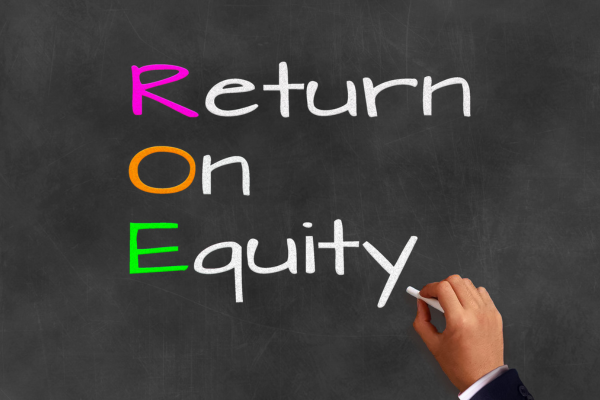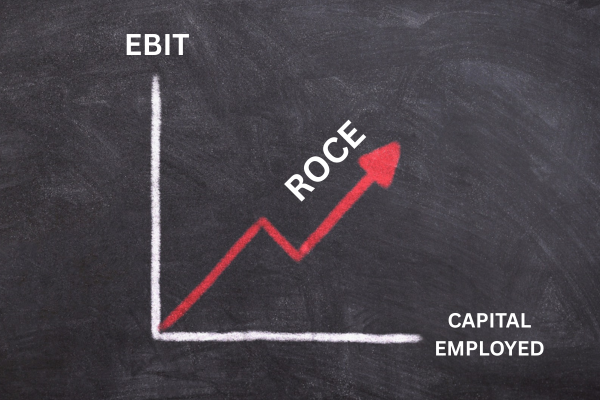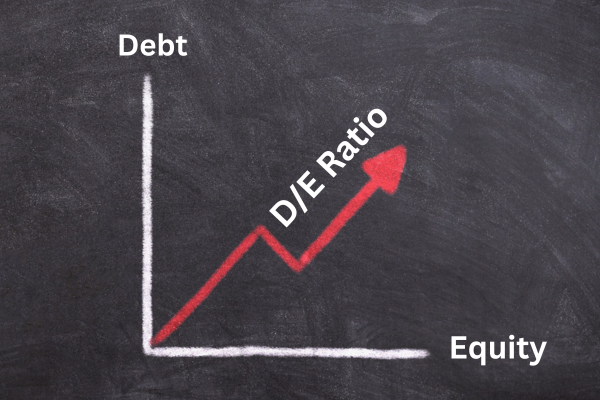When analyzing a company’s financial strength, investors often look beyond just revenue and profit. They want to understand how effectively a business uses the money invested by shareholders to generate returns. That’s where key financial metrics come into play. Among these, one of the most insightful tools is ROE—a performance indicator trusted by experienced investors. In this article, we’ll explore why this ratio holds such significance in evaluating a company’s profitability and growth potential, and how you can use it to make smarter investment decisions.
Table of Contents
1. What is ROE (Return on Equity)?

ROE or Return on Equity, measures a company’s net income against its shareholders’ equity. It essentially tells you how much profit a company makes for every rupee of shareholders’ capital. A higher ROE indicates efficient management and strong financial performance.
Formula for ROE:
ROE = Net Income / Shareholders’ Equity x 100
Where:
- Net Income is the profit after tax
- Shareholders’ Equity is total assets minus total liabilities
2. Importance of ROE

- Performance Indicator: It helps in assessing the efficiency of a company in generating profits.
- Investor Decision Tool: Investors use ROE to compare profitability between companies in the same industry.
- Management Effectiveness: Reflects how well management is utilizing equity capital.
- Growth Potential: A consistent and rising ROE is a sign of sustainable growth.
3. How to Calculate ROE with Example
Let’s say Company A reports a net income of ₹50 lakhs and shareholders’ equity of ₹5 cr.
ROE = 50 / 500 x 100 = 0.10 x 100 = 10 %
This means Company A generates 10 paise of profit for every ₹1 of equity.
4. What is a Good ROE?

A good ROE varies across industries. However, a general benchmark is:
- 15% or higher is considered excellent
- 10%-15% is good
- Below 10% could indicate inefficiency
Always compare ROE with industry peers to get accurate insight.
5. ROE vs ROA (Return on Assets)
- ROE focuses on shareholders’ equity
- ROA evaluates profitability based on total assets
High ROE with low ROA may suggest high debt usage. Understanding both gives a more comprehensive financial picture.
6. Factors Affecting ROE
- Profit Margins: Higher margins improve net income
- Asset Turnover: Efficient use of assets boosts revenue
- Financial Leverage: More debt can inflate ROE but increase risk
7. Limitations of ROE
- Debt Distortion: Companies with high debt might show artificially high ROE
- Negative Equity Issue: ROE is not useful when equity is negative
- Accounting Manipulations: Earnings management can skew results
- Industry Variation: Not a one-size-fits-all metric
8. DuPont Analysis of ROE
DuPont formula breaks ROE into three parts:
ROE = Net Profit Margin × Asset Turnover × Financial Leverage
This helps in understanding what drives the ROE – whether it’s profit margins, efficiency, or leverage.
9. Practical Use of ROE in Investment
- Comparing Companies: Use ROE to evaluate which company is better at generating profit with its equity
- Tracking Over Time: Watch trends over several years
- Screening Stocks: Helps filter high-quality, sustainable businesses
10. Industry Benchmarks for ROE
Different sectors have different ROE expectations:
- Tech Companies: Often have higher ROE (20%+)
- Utilities: Typically lower ROE (5%-10%) due to heavy asset base
- Banking and Financial Services: Usually have moderate to high ROE
11. How ROE Affects Share Price
Return on Equity (ROE) affects share price by indicating how efficiently a company generates profit from shareholders’ equity. A high ROE can attract investors, boosting demand and increasing the stock price, while a low ROE may signal poor performance, potentially leading to declining investor interest and lower share value.
12. Improving ROE: What Companies Do
- Reduce Costs
- Increase Revenues
- Use Leverage Wisely
- Share Buybacks: Reduces equity base, increasing ROE if profits remain steady
13. Red Flags in ROE Analysis
- Sudden Spikes in ROE: Could mean financial manipulation or temporary gains
- Declining ROE: Signal of operational issues or increased equity base without matching profit
- Very High ROE: May be due to excessive debt
14. Final Thoughts: Should You Rely Solely on ROE?
While ROE is powerful, it should not be the only metric for investment decisions. Combine it with:
- PE ratio
- Debt-to-equity
- Return on Assets
- Free cash flow
- Return on Capital Employed
A balanced approach provides better investment clarity.
ROE (Return on Equity) is a crucial metric that gives insight into a company’s ability to generate profit from shareholders’ funds. Understanding ROE helps investors make informed decisions, especially when used in conjunction with other financial ratios. Whether you’re a beginner or a seasoned investor, mastering ROE analysis can significantly improve your investment strategy.
Impact-Site-Verification: b9e47c79-c4a7-4291-9b27-20f3641e5559
Frequently Asked Questions (FAQs)
Q1: What is the benefit of a high ROE?
A high ROE indicates a company is efficiently generating profits from shareholders’ equity, reflecting strong financial performance, effective management, and potentially higher returns for investors compared to peers with lower ROE.
Q2: What are the five components of ROE?
The five components of ROE, according to the DuPont analysis, are Net Profit Margin, Asset Turnover, Equity Multiplier, Operating Efficiency, and Financial Leverage—each reflecting different aspects of a company’s financial performance.
Q3: Can ROE be negative?
Yes, ROE can be negative if a company incurs a net loss, resulting in negative net income. This typically indicates poor financial performance and may signal potential issues with profitability, inefficiency, or excessive debt relative to shareholder equity.
Q4: What is the difference between ROI and ROE?
ROI measures overall return on total investment, including debt and equity, while ROE focuses specifically on returns generated from shareholders’ equity, showing how effectively a company uses owners’ funds to profit.
Q5: Which industry has high ROE?
Industries like technology, pharmaceuticals, and financial services often have high ROE due to strong profit margins, low capital needs, and efficient use of equity to generate substantial returns.





